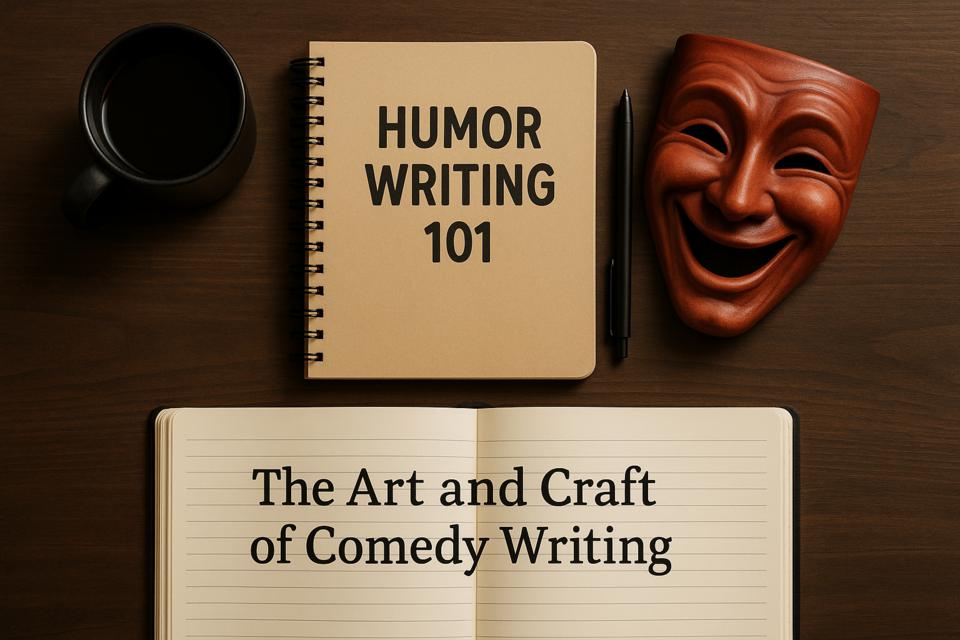Did you know that there are several methods you can use to crank out that best-selling novel?
A. Novel Writing: Myriad Forms
As is true of many creative endeavors, writing a novel can take many different forms. Perhaps adding to the confusion, is the fact there is no one right way to write a novel. Thus, the question you may think to ask is -- how then, do I approach the process?
Because the answer to this question is subjective, you will first need to understand the different strategies that exist for writing a novel. Based upon this information, your next step will be to determine the style/approach that will work best for you.
Naturally, in sifting through the various novel writing options, you will find a flurry of differing perspectives. For example, some believe it is best to work without an outline.
B. Snowflake Method
In contrast, the Snowflake Method encourages the writer to begin the process by "getting organized." Step by step, the Snowflake Method takes writers from "Tabula Rasa" (clean slate), to a completed manuscript of one's own creation.
1. Novel summary sentence - - Write a one-sentence summary highlighting the central theme, and the personal element of the story. Within the Snowflake model, it is recommended that sentences contain no more than 15 words.
2. Novel summary paragraph -- Expand the one-sentence summation into a comprehensive paragraph encompassing the central plot line, major crises, and a sneak peak as to how all the pieces will come together in the end.
It is suggested that this paragraph have no more than five sentences: one to set-up the story, and provide the background; one for each of the major crises; and one to provide the summation.
3. Character summation -- Write a one-page summary for each of the major characters within the novel, whereby each character break-down contains the following elements:
-
Character's name
-
Character's plot line (essentially, his/her story line drafted within one sentence)
-
Character's motivation (the factors that drive him/her)
-
Character's principle goal (his/her unwavering objective)
-
character's conflict (obstacles preventing him/her from reaching main objective)
-
Character's ultimate realization (the great life lesson he/she acquires as a result of going through the experiences outlined within the novel)
4. Development of summations -- At this point, the writer should have a good overview of the general structure/components of the novel. Thus, in going forward with Step 4, it is time to begin blossoming out the basic summations into a series of full paragraphs.
The rule of thumb on this step, is that you do not spend an inordinate amount of time putting together these paragraphs. Rather, it is advised that you get down as much information on paper as you can, without excessively worrying about whether these ideas will stick, or whether they all even connect with one another.
5. Character synopses -- This step entails the further development of the character descriptions. Written from the narrative of the character, it is time to write up full-page overviews of your central characters.
Although you have already (in Step 3), produced one-page summaries for each character, you now want to expand upon the original profile to include more character traits and behaviors. For instance, is the character high-strung and quick to act, or is he/she reasonably calm and contemplative in his/her actions?
6. Plot line expansion -- In a gradual expansion process, the original plot line framework is developed from one page to four pages. The writer accomplishes this task by ballooning out the plot lines to include forthcoming conflicts, pivotal characters, and the strategic ways they all interact and come together within the novel.
Specific elements to add into the plot line expansion:
- Character's epiphany (what will he/she learn; how will he/she change?
- One-paragraph summary of the character's story line
Note: As you may gather at this juncture, within the Snowflake Method, the novelist alternates between working on the plot lines and working on the individual character descriptions.
7. Back to the character studies -- By fully fleshing out the characters, this means the writer is to provide each with a precise age, history orientation, family dynamic, reactionary behavior(s), interaction behavior(s), methods for achieving goals, and life lessons learned along the journey.
Although many of these elements will continuously change as you write-up the actual pages of the novel, the idea is to put down an initial impression, and then move forward to make changes as the specific qualities of the character, and his/her story line(s), crystallize up to the point of the penultimate climax.
8. Critical scene development -- In order to eventually write the novel, (yes, you will still need to do this), you will first need to come up with a number of critical scenes, and from there, integrate them into the overall plot line of the novel.
For some, writing up the key scenes is more easily done using a spreadsheet program. Using such a tool aids the writer in laying out the scenes, in terms of major components and principle characters involved.
9. Narrative description -- In producing a narrative description of the story, it is recommended that writers rely upon the critical scene spreadsheet to help them identify specific details and key moments. Also, at this point, writers can add snippets of actual dialogue into the narrative description overview.
C. Three-act structure
As an alternative to the Outline-Free and Snowflake Methods, there also exists the traditional approach known as the "Three-Act Structure."
The crux of this method, is that the writer is to closely adhere to the following guidelines: The novel must contain three disasters. The first coincides with the end of Act I; the second occurs at the mid-point section of Act II; and the third arrives at the end of Act II.
At the onset of the story, the writer sparingly introduces the setting, the characters, their situational conflict, and both their individual and collective goals.
Labeled as "Plot Point 1," this is the key situation causing the central character to deviate from his/her "normal" life, toward a more complex conflict on which the overall story is based.
True, all fictional literary works tend to have a beginning, middle and end. However within the Three-Act Structure model, each component has a very specific purpose:
Beginning -- Masterly-written stories usually begin at "Plot Point 1." This then allows the writer to propel the central character into the crux of the plot line. Interestingly, the central character never actually moves beyond Act I. Rather, the writer uses it as an outline that gets filled in as the story evolves.
Middle -- The mid-section of the plot line is expanded upon by adding challenges and miscalculations, each of which creates it own sub-crisis. While each sub-crisis is easily resolved, it still plays a role in contributing to the final climax. Rising and falling tension should be prevalent throughout the novel. Yet, as the story nears a close, the tension should consistently rise up, until what is known as "Plot Point 2" -- the point at which the climax is resolved.
End -- Wrapping up the novel in nice little package is the goal of the novel's conclusion. All loose ends and plot lines should be clearly resolved in what is known as the denouement, whereby the tension decreases, the characters' homeostasis is returned, and life as we know it goes back to "normal."
This portion of the novel is the shortest, for readers tend to lose interest once the mysterious elements are removed.
D. Chapter conclusion
Granted, as the writer, you are in a position to call the shots in terms of the way in which you desire to write your novel, and unfold the details of your story. However, you may want to consider the benefits of working within a predefined structure, regardless of whether you choose the Outline-Free method, Snowflake, Three-Act Structure, or, perhaps, a different method of your own preference.
Selecting a Specific Class
A. Short Story Novels
It has been said that short novellas may be a thing of the past. Surprising though; because of the shortening effect technology has had on people's attention spans, you would think this would be the ideal environment in which the short story would thrive.
And, while explanations for readers' preferences differ, the common theme is that short stories lack the build-up of climactic intrigue, and investment in characters' back stories, that full-length novels tend to possess.
1. What is a novel? Succinctly put, a novel is a condensed tale that, as a whole, offers readers a moral to, or a satirical perspective on, a particular vexing life situation.
B. Short Stories Versus Novels
On the part of both the reader and the writer, a good many people hold the belief that short stories require more thinking, because their brevity does not allow for a great deal of explanation or set-up -- not to mention descriptive characteristics.
Therefore, short stories require a sophisticated degree of alliteration(enhancement) from the writer, and speculative thinking (reasoning and deduction) from the reader.
Because of this, some view novels as requiring a less intensive thought process for the story, which unfolds at a gingerly pace, is embellished with rich, specific details, and a series of intertwined plot lines.
Whether your preference is to write a long-form or a short-form novel, it is critical that you go through the same writing process, regardless of genre. From character and setting introductions, to climactic build-up and conflict resolution, the individual writing steps for each genre should not be glazed over, simply due to the creation of a short story versus a long-form novel.
When setting out to write a short story versus a long-form novel, the difference in the writing process becomes evident during the process of creating descriptive passages and elaborate plot lines. At this juncture, you will need to discern which information is essential to the story, and which may be more superfluous.
As a writer, when you have limited space, your job is to identify the facts and elements that are truly central to your story.
Similar to the job of copywriter, a short story novelist is dealing with limits in which each word takes on the added pressure of carrying a great deal of weight. In light of the need for creating tight text, the editing stage often takes precedence over the original writing process.
On one extreme, the writing process for the long-form novel entails vivid imagery and a labyrinth of events leading up to the final climax, and ultimate resolution.
C. Steps in Writing Compelling Stories
- Deciding upon a specific genre -- crime, children's history, etc.
- Creating memorable characters without an excessive use of words
- Drafting dialogue that accurately reflects characters' motives and plot lines
- List-making as a method for narrowing down descriptive elements and plot points, to select those most pivotal to the central idea of the story
- Clustering: a pre-writing technique for organizing ideas, that involves brainstorming and grouping ideas into like-minded categories
- Time-spacing between cases: One of the more difficult techniques to master, this represents the idea that writers should adequately space the major components of the story.
- Perspective: choosing a voice -- first/third person -- to carry throughout the entire story
- Research: gathering relevant background information pertaining to the subject matter of the story, character profiles, and history/time in question
D. Notable Short Story Novelists
Richard Ford (Pulitzer Prize winning author of The Sportswriter and the sequel, Independence Day) His style is congruent with the psyche of the central characters. It is unique, smooth, and lyrical, illuminating the texture of everyday life more brilliantly, and/or capturing the truth of human emotions in a more honest, authentic manner.
Alice Munro (author of The Love of a Good Woman; Hateship, Friendship, Courtship, Loveship, Marriage andThe View from Castle Rock) Her writing style has been heralded as, "the use of words that mediate between parallel worlds." Again and again, Alice Munro spins tales that depict, with wondrous grace, the extent of what can be done within a simple short story.
Even if short story writing may not be your calling, both Ford and Munro -- because of their ability to craft highly descriptive, vivid characters -- can serve as exceptional role models for any type of fictional writing. Slow and languid storytelling aids both of these exceptional writers in presenting sharply drawn, realistic images in a natural, unforced manner.


























